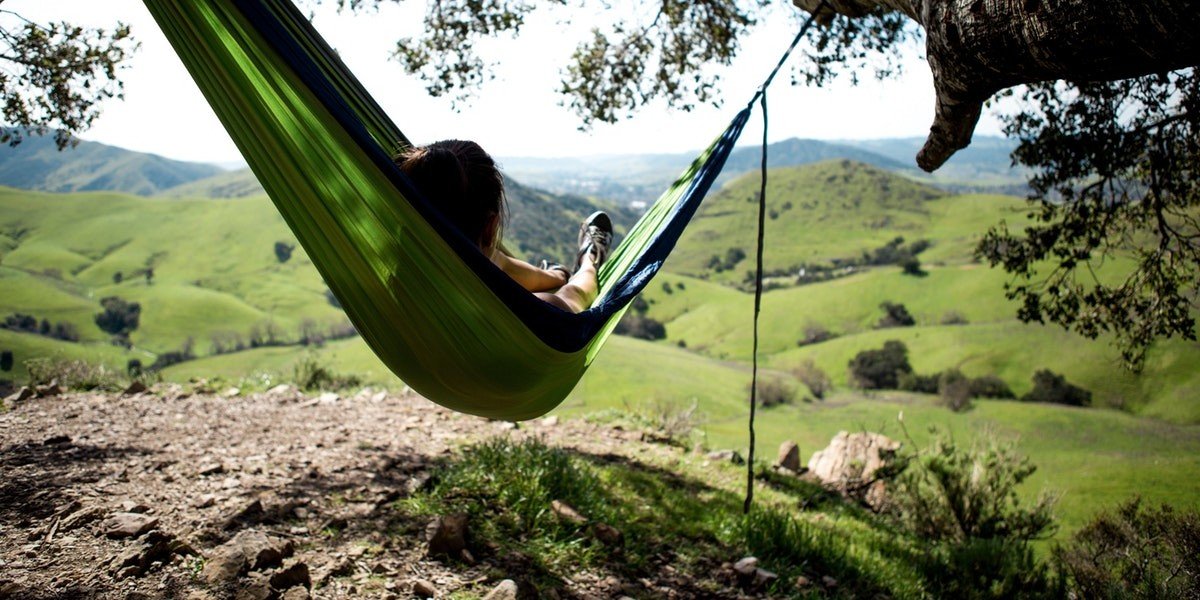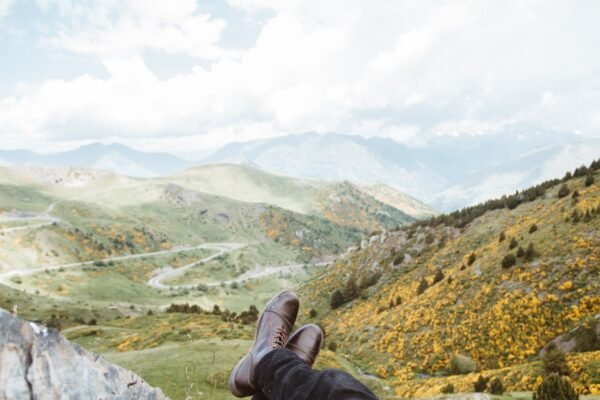For years, there has been this accusing voice in the back of my head telling me that no matter how much I’m doing, it’s not enough. Like all lies, there’s truth in this. No matter how much I do, five seconds on my newsfeed is enough to jar me with words and images that confirm that this world is still very much a broken place.
There’s a reason that the Christian stadium events I went to as a teen and young adult bombarded us with heartfelt pleas to be radical world changers. There’s a reason why so many Christian non-profits are begging for our time and money. There’s a reason why church ministries put out calls for more volunteers. Because this world is in need of reconciliation to Christ…and we have the privilege of partnering with Christ in this mission.
Here’s where I’ve run into a problem: at times, this myopic view of reconciliation has had a gnostic effect, causing me to view such basic necessities as sleeping and eating as unwelcome constraints on my time and ministry. How dare I prioritize such un-spiritual things when God is counting on me to “make a difference”?
In part 1 of this series, we explored how the conversation on burnout tends to revolve around the notions of both the quality and quantity of our work. However, any discussion that explores the quantity of our work is intricately tied to the quality and quantity of our rest.
Imaging God in Rest
As discussed in the previous article, the Christian mission of reconciliation is a recapitulation of God’s original commission to humanity that we maintain and expand His garden home until it fills the entire earth. However, the only way humanity could ever successfully participate in this mission was to image God in reflecting His character and ways as we did this work. This action of imaging God is what N.T. Wright refers to as the covenant of vocation: “The vocation…is that of being a genuine human being, with genuinely human tasks to perform as part of the Creator’s purpose for [His] world. The main task of this vocation is ‘image-bearing’, reflecting the Creator’s wise stewardship into the world and reflecting the praises of all creation back to its maker.”[ref]Wright, N.T. (2016). The Day the Revolution Began. (San Francisco: HarperOne), p. 76. [/ref]
A Lopsided Picture of God
When we consider this vocation of imaging God, there is a logical connection between the idea of vocation and imaging God in our work. Furthermore, we are image-bearers to a God who engaged in the “work of creating.” (Genesis 2:3) In other words, when we image God in our work, we show creation a glimpse of God’s ongoing plan for creation.
[bctt tweet=”Humans are to image God not just in work but also in rest. – Amber Riggs”]
However, when we put all of our focus on imaging God in work, we paint a lopsided picture of God, humanity, and the mission He entrusted to us. We know that when God completed His work of creating that He took up residence in His garden home and rested, much as His presence would later fill Solomon’s temple. God’s rest in Eden signaled the beginning of the sustaining role that He plays in creation. Similarly, rest plays a sustaining role in our lives as well. Therefore, it shouldn’t surprise us that humans are invited to not only image God in work but to image Him in rest as well.
Rhythms of Rest
When we take yet another look at God’s original plan, we don’t see humans caring for and expanding the garden for 24 hours a day, 7 days a week. Instead, we see that God has worked rhythms of rest into the lifestyle of the garden:
- On average, there are 12 hours of daylight for working and 12 hours of darkness for resting.
- God went on walks with the first humans in “the cool of the day”. (Genesis 3:8)
- God created us as mortals who need nutrients to eat and provided humanity with food. These brief periods of restoration would have taken place at multiple points during the day.
- Though we don’t know how long the first humans were in the garden before the rebellion, God’s covenantal institution of a weekly rest as a memorial to creation, in addition to Jesus’ declaration that “the Sabbath was made for man”, strongly implies that this weekly rest was a garden rhythm.
When I compare these rhythms to my own rhythms of work and rest, I find that I attempt to image God much more in work than I do in rest. Why? This is in part due to our culture. Even when we are “off the clock”, we still have the work to do of managing personal finances, cleaning and repairing our homes, washing and folding clothes (not to mention the final step of actually putting them away), and preparing meals. If we have children, we can add even more to that list. However, we also have a tendency to categorize activities as rest even though they don’t fulfill the restorative purposes that God intended our rest to embody.
Restorative Rest
To image God in rest doesn’t mean that God intends for humanity to do whatever we want during “non-work” times. Rather, rest is a time for us to delight in God, creation, and one another. It’s a time to not only remember that God is our Sustainer but to actively put our trust in Him. Fittingly, the word “Eden” means delight. When we image God in rest, we allow ourselves to delight in activities that sustain our very lives. This includes sleeping, eating, exercising, deepening our relationships with God and one another, and simply enjoying creation. It continually amazes me how going outside and talking to God while I walk rejuvenates my body, mind, and spirit. And yet, these walks are things that I “squeeze in” if I have time and if the weather happens to be agreeable at that moment.
Do a quick survey of your life. Are you getting enough sleep? The CDC reports that 1/3 of us aren’t.[ref]https://www.cdc.gov/chronicdisease/resources/infographic/sleep.htm[/ref] How healthy is your diet? The healthier the food, the longer it often takes to eat it. It often takes time to plan healthy meals, and it is near impossible to gulp down raw celery. What about relationships? Do you primarily see the important people in your life in passing or do you have time to laugh and reflect on life together? What is your devotional life like? Do you have time set aside each day or is your plan to take opportunities when (or if) they come?
Out of Balance
When the quantity of our work throws our work-rest rhythm out of balance, it is common for these restorative activities to take the brunt of the hit.
However, restorative rest is taking a hit from another angle as well. It’s striking to note that even though the average household income[ref]https://www.bls.gov/news.release/cesan.nr0.htm [/ref] decreased by 1.5% from 2016 to 2017, our spending on entertainment increased by 10%. Yet, entertainment is just one of the methods that we employ to alleviate stress. Anyone else ever want to “get out of the house” to eat? That expenditure increased by 6.7%. Another popular destressor — “personal care products and services” — increased by 7.8%. While it could be tempting to lay these increases at the feet of rising costs, we can’t ignore that most of these expenditures haven’t historically been considered necessities.
Two Questions
Despite these increases in expenditures, the pangs of burnout aren’t on the mend. It begs two questions:
First, why are we working so much? If our work/rest rhythm is out of sync, what is driving it? For many of us, it is legitimately tied to the season of life we are in or socioeconomic issues beyond our control.
However, in many cases, other issues are lurking behind the surface. For some, the rewards of climbing the corporate ladder are too enticing. We need it to affirm our worth. Overworking increases our influence. It gives us a power that we wouldn’t have otherwise. Possessions and pleasure are also enticing motivators. The more money we make, the more we can purchase…but those purchases often have a hidden cost in the form of the work that it takes to care for those purchases. As seen above, we are also in the habit of purchasing pleasures, even while we neglect restorative behaviors that cost nothing.
The second question is this: have we forgotten how to engage in truly restorative rest?
A Rule of Life
In The Emotionally Healthy Leader, Pete Scazzero recommends an exercise that helps us not only evaluate our life rhythms but to help regulate them. At face value, the exercise is simple: divide a square into four parts and label them prayer, rest, relationships, and work. The notion was that, when properly calibrated, we both receive and redistribute God’s love through each of these categories.
The shocking part for me came when I was writing down everything in my life that currently fit in each quadrant.The inhabitant of the lower right-hand square was significantly more full than the others. It was easy for me to see how this was throwing everything out of balance.
Restored?
However, what really took me by surprise was identifying restful activities that I actually found restorative. As I reflected on rest, I began evaluating a few of the activities that I fondly designate as rest. Sitting down to watch TV is a fan favorite when it comes to rest…but I realize that when I get back up, I don’t get back up feeling restored. Instead, I stand up feeling even more drained and less motivated. I turned my attention to another screen – that of my cell phone. It is a great diversion, yes. But is scrolling restorative? No.
It was jolting. Screens lost their place on the list, making that quadrant an even more desolate wasteland. Finally, it began to take shape: being in bed by 10:00, walking, journaling, reading, and yes…rewarding myself with a massage at the end of each homeschool term.
Get Specific
A Rule of Life isn’t just an exercise to evaluate your life. It also serves in much the same way that a trellis serves a vine. When the vine follows the trellis, it grows tall and healthy. However, when a vine doesn’t have a trellis to support it, it can choke out other plants. In the case of a tomato vine, without support, its fruit droops to the ground where it falls prey to vermin, bugs, and rot. We don’t want that!
Scazzero recommends being specific with a Rule of Life. Are you at a place in life in which you can go on a short personal prayer retreat once a year? Write it down. Otherwise, it will fall through the cracks. What about relationships? Who are the people you most need to make meaningful connections with? Write down how how and how often you will make these meaningful times happen.
Significantly, a Rule of Life is a practice. It’s not something that is easy to engage in perfectly. Even after two years of practicing a Rule of Life, my syncopation is still off, but the more I practice these rhythms and recalibrate my life, the easier they become.
I’ve also observed that even engaging in a singular restorative activity for an extended period of time can significantly reduce its restorative qualities. I see this as more evidence that God desires us to live a rich and varied life.
The Cadence of Life
[bctt tweet=”Work & rest: A rhythm God established at the beginning of human history. – Amber Riggs”]
Work and rest. It’s a rhythm that God established at the beginning of human history. More specifically, six iterations of rest-work followed by a rest-rest. This is the cadence of life on a mission to image God and proclaim His glory throughout all creation. What is keeping us from embracing it?
Do you want Christ to transform your approach to rest? The following resources are for you:
- Read Why Its Hard for Me to Sabbath
- Read Abide in Christ: What it Looks Like & Why It’s a Must
- Download Artios’ free guide to Discovering Your Leadership Strengths
- Develop other leadership skills and habits by joining Artios Christian College’s diverse community of students.








